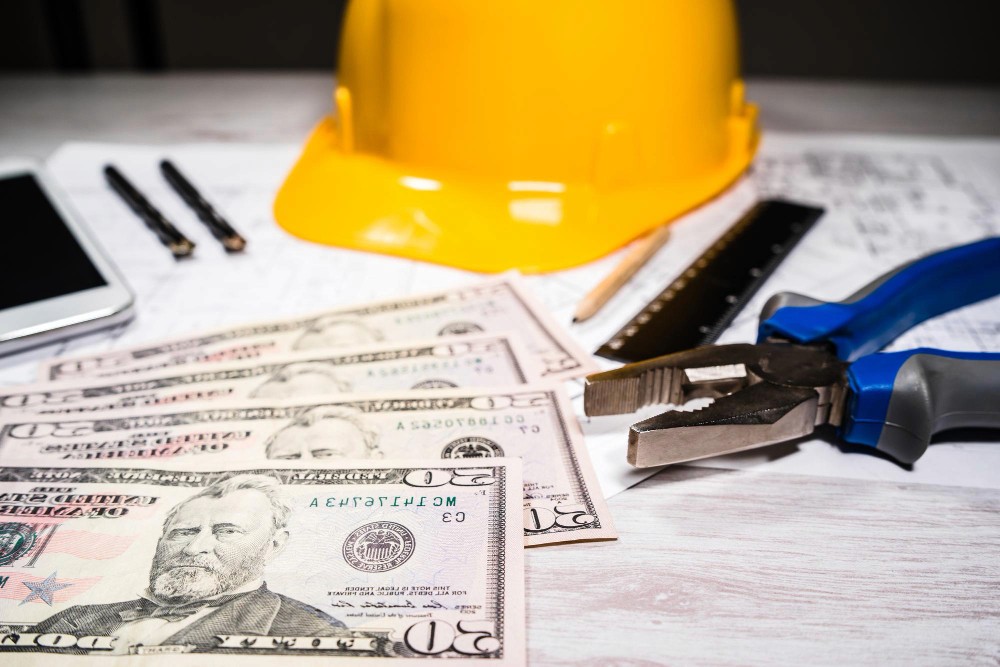Benefits of Accurate Material Estimations in Construction
Accurate material estimations are essential for the success of any construction project. They help to ensure the efficient use of resources, minimize costs, and improve project scheduling and management. In this article, we will explore the benefits of accurate material estimations in construction and how they can enhance quality and safety, as well as promote sustainable construction practices.
Understanding Material Estimations in Construction
Material estimations are the process of calculating the quantity of materials required for a construction project. They involve determining the type and amount of materials needed for various tasks, such as framing, roofing, flooring, and painting. Accurate material estimations ensure that there are no material shortages or excesses during construction, which can lead to project delays and increased costs.
Importance of Material Estimations
Material estimations are crucial to the success of a construction project. They help to ensure the timely procurement of materials, minimize waste and costs, and streamline construction processes. Without accurate material estimations, construction projects can be delayed, resulting in increased costs and reduced profitability.
For example, if a construction project requires a certain amount of steel for the frame, an inaccurate material estimation may result in a shortage of steel. This can delay the construction process as the team waits for additional steel to be delivered. On the other hand, an overestimation of steel can lead to unnecessary expenses and waste, which can also impact the project's profitability.
Common Methods for Estimating Materials
There are several methods for estimating materials in construction, including rule of thumb, square-foot estimating, unit estimating, and cost estimating. Each method has its advantages and disadvantages, and the choice of method depends on the project's specific needs.
The rule of thumb method involves using past experience and knowledge to estimate the required materials. This method is quick and easy, but it may not be accurate for complex projects. Square-foot estimating involves estimating the materials required for each square foot of the project. This method is useful for projects with a uniform layout, but it may not account for irregularities in the project's design. Unit estimating involves estimating the materials required for each unit of the project, such as each window or door. This method is useful for projects with many similar units, but it may not be accurate for complex projects. Cost estimating involves estimating the cost of the materials required for the project. This method is useful for projects with a fixed budget, but it may not be accurate for projects with fluctuating material costs.
Factors Affecting Material Estimations
Several factors can affect material estimations in construction. These include the size and complexity of the project, the type and quality of materials used, and the construction techniques employed. Safety considerations and compliance with building codes and regulations also affect material estimations.
For example, the size and complexity of a project can affect the accuracy of material estimations. A larger project may require more precise estimations to avoid material shortages or excesses. Similarly, the type and quality of materials used can affect material estimations. Higher-quality materials may be more expensive, which can impact the project's budget. Construction techniques can also affect material estimations, as different techniques may require different types and amounts of materials.
Finally, safety considerations and compliance with building codes and regulations are essential factors that affect material estimations. Materials must meet safety standards and comply with building codes and regulations to ensure the safety and integrity of the project.
Reducing Material Waste and Costs
Accurate material estimations help to reduce material waste and costs during construction. This is achieved through the efficient use of resources, timely procurement of materials, and sustainable construction practices.
In addition to accurate material estimations, there are several other ways to reduce material waste and costs during construction. One way is to use prefabricated components, which are pre-manufactured off-site and assembled on-site. This reduces waste by minimizing the amount of materials needed on-site and can also save on labor costs.
Another way to reduce material waste is through the use of Building Information Modeling (BIM) software. BIM allows for a more accurate and detailed representation of the building, which can help to identify potential waste and inefficiencies in the construction process.
Efficient Use of Resources
Accurate material estimations enable construction professionals to plan for the right amount of materials required for each task. This ensures that there is no waste or excess, which can lead to cost overruns. Efficient resource use also promotes sustainable construction practices and reduces the environmental impact of construction projects.
Cost Savings from Accurate Estimations
Accurate material estimations help to minimize costs and improve profitability. When materials are accurately estimated, there is no need to order excess materials, which can result in waste and increased costs. Accurate estimations also prevent shortages, which can lead to delays and increased costs.
In addition to accurate material estimations, cost savings can also be achieved through the use of lean construction practices. Lean construction focuses on maximizing value and minimizing waste, which can lead to cost savings and increased efficiency.
Improving Project Scheduling and Management
Accurate material estimations improve project scheduling and management. They help to ensure timely procurement of materials, streamline construction processes, and minimize delays and disruptions.
Timely Procurement of Materials
Accurate material estimations enable construction professionals to order materials in advance, ensuring that they are delivered on time. This helps to prevent delays and disruptions and promotes the timely completion of construction projects.
For example, let's say a construction project requires a specific type of steel beam. Without accurate material estimations, the construction team may not realize they need to order the beam until it's too late. This could result in a delay while waiting for the beam to be manufactured and delivered. However, with accurate material estimations, the team can order the beam well in advance, ensuring that it arrives on time and construction can proceed without delay.
Streamlining Construction Processes
Accurate material estimations promote efficient construction processes. They help to ensure that materials are available when needed, minimizing delays and reducing the time required for construction activities. Streamlining construction processes saves time and increases profitability.
For instance, accurate material estimations can help construction professionals identify areas where they can reduce waste and optimize their use of materials. By doing so, they can minimize the amount of time and money spent on material procurement and management. This allows them to focus on other aspects of the project and ultimately complete it more quickly and efficiently.
Minimizing Delays and Disruptions
Accurate material estimations help to minimize delays and disruptions during construction. They ensure that all materials are available when needed, reducing the likelihood of delays caused by material shortages. Minimizing delays and disruptions improves the overall efficiency of construction projects and increases profitability.
For example, accurate material estimations can help construction professionals identify potential bottlenecks in the construction process. By doing so, they can take steps to prevent delays before they occur. This could involve ordering additional materials in advance or adjusting the construction schedule to account for potential delays. By minimizing delays and disruptions, construction professionals can complete projects more quickly and efficiently, ultimately increasing profitability.
Enhancing Quality and Safety
Accurate material estimations promote quality and safety in construction. They help to ensure proper material selection, avoid structural compromises, and comply with building codes and regulations.
Ensuring Proper Material Selection
Accurate material estimations help to ensure proper material selection. This ensures that materials are of the right quality for each task, leading to optimal performance and durability. Proper material selection reduces maintenance and replacement costs, improving sustainability and increasing profitability.
For example, when estimating materials for roofing, it is important to consider the slope of the roof, the climate in the area, and the type of building. If the wrong type of roofing material is selected, it can lead to leaks, water damage, and other structural issues.
Avoiding Structural Compromises
Accurate material estimations help to avoid structural compromises. This is achieved by ensuring that the right materials are used for each task and that they are installed correctly. Avoiding structural compromises reduces the risk of accidents and prevents project delays.
For instance, in estimating materials for a building's foundation, it is crucial to consider the soil type, the load-bearing capacity of the soil, and the type of building. If the wrong type of foundation material is used or if it is not installed correctly, it can lead to foundation failure, which can compromise the entire structure.
Compliance with Building Codes and Regulations
Accurate material estimations ensure compliance with building codes and regulations. This helps to ensure the safety of the building, as well as the safety of the workers and occupants. Compliance with building codes and regulations also reduces the likelihood of litigation and associated costs.
For example, when estimating materials for electrical wiring, it is important to comply with the National Electrical Code (NEC), which sets safety standards for electrical installations. Failure to comply with the NEC can lead to electrical hazards, such as fires and electrocution.
Overall, accurate material estimations are essential for promoting quality and safety in construction. They help to ensure proper material selection, avoid structural compromises, and comply with building codes and regulations, ultimately leading to successful and sustainable construction projects.
Conclusion
Accurate material estimations are essential for the success of any construction project. They improve project scheduling and management, reduce material waste and costs, and enhance quality and safety in construction. By promoting sustainable construction practices and efficient use of resources, material estimations improve the overall sustainability of the built environment. Construction professionals should prioritize accurate material estimations to ensure the success of their projects.








